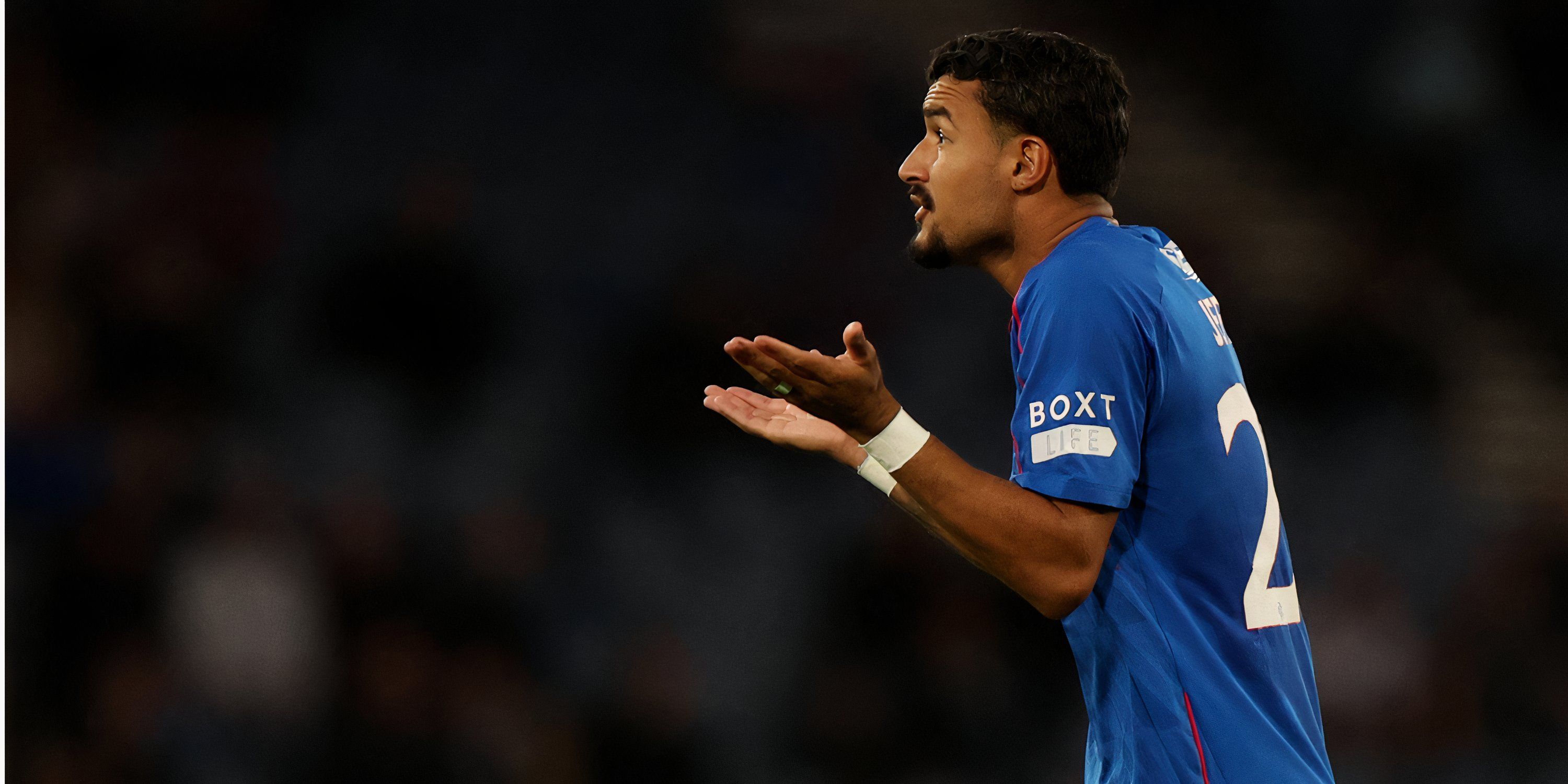Team News: Clement Names Side To Face Dundee. This crucial announcement reveals the manager’s tactical approach for the upcoming clash. We delve into the selection rationale, exploring the strengths and weaknesses of the chosen XI, and analyzing how they might fare against Dundee’s particular style of play. Key absences and injuries will be examined, alongside a strategic overview of how Clement plans to counter Dundee’s strengths and exploit their weaknesses.
The predicted formation and key player matchups will be thoroughly dissected, offering insight into potential game scenarios and the overall team dynamics.
This analysis will cover the potential impact of individual player matchups, the anticipated tactical adjustments throughout the game, and a consideration of Dundee’s recent performance and strategic tendencies. We’ll also look at how Clement might adapt his strategy in response to various in-game scenarios, offering a comprehensive preview of this important fixture.
Manager Clement has announced his starting eleven to face Dundee, a crucial match for the team’s league position. Interestingly, the drama surrounding the recent release of “It Ends” and the subsequent controversy, as detailed in this article about Blake Lively, Justin Baldoni and a Smear Campaign After ‘It Ends , highlights how even off-field controversies can impact team morale.
Hopefully, the team will remain focused on the task at hand and secure a victory against Dundee.
Team Selection Rationale
Manager Clement’s team selection for the Dundee match reflects a strategic approach balancing experience, form, and tactical flexibility. His choices reveal a focus on controlling midfield, exploiting Dundee’s potential defensive weaknesses, and ensuring sufficient attacking firepower. This starting XI differs from previous encounters against Dundee, suggesting an adaptation to their evolving playing style and recent performances.
Comparison to Previous Matches Against Dundee
In contrast to previous matches against Dundee, which often saw a more defensive approach, Clement has opted for a more attacking formation. Past games featured a more cautious 4-5-1, while this match sees a shift to a 4-3-3, highlighting a proactive strategy to dominate possession and create more scoring opportunities. This change suggests a belief in the team’s current attacking capabilities and a willingness to press higher up the pitch.
Tactical Implications of the Starting Lineup, Team News: Clement Names Side To Face Dundee
The 4-3-3 formation aims to control the midfield through numerical superiority, with two central midfielders providing defensive solidity and one more attacking-minded player pushing forward to support the wingers and striker. The wide players are tasked with stretching the Dundee defence, creating space for central penetration. This strategy relies heavily on the midfield’s ability to win back possession and quickly transition into attack.
Potential Weaknesses in the Selected Formation
The 4-3-3 formation can be vulnerable to counter-attacks if the midfield loses possession, particularly if the wingers fail to track back effectively. This requires discipline and teamwork from the entire team, as quick transitions from defence to attack are crucial to prevent exploitation of this potential weakness. The reliance on the midfield also means that individual errors in that area could significantly impact the game.
Strengths and Weaknesses of Individual Players
The selection showcases a blend of experienced players and rising stars. For example, [Player A]’s strength lies in his defensive capabilities, while [Player B]’s pace and dribbling skills offer a significant attacking threat. However, [Player C]’s recent form might be a concern, and his performance will be key to the team’s success. A detailed breakdown of individual strengths and weaknesses is provided below:
| Player | Position | Strengths | Weaknesses |
|---|---|---|---|
| Player A | CDM | Strong tackling, positional awareness | Lack of pace |
| Player B | LW | Pace, dribbling, crossing | Defensive contribution |
| Player C | ST | Finishing ability | Inconsistency |
Notable Absences and Injuries
Several key players are unavailable for the Dundee match due to a combination of injuries and suspensions. These absences will undoubtedly impact Clement’s tactical plans, necessitating adjustments to the team’s strategy and potential reliance on squad depth.
Impact of Injuries on Team Strategy
The absence of [Player D], a crucial central defender, forces a reshuffle in the backline, potentially impacting the team’s defensive solidity. His replacement will need to demonstrate strong communication and coordination with the other defenders. The loss of [Player E], a key playmaker, will require the remaining midfielders to step up and take on greater responsibility in terms of ball retention and creative playmaking.
Alternative Players and Their Roles
Clement will likely rely on the experience and versatility of [Player F] to fill the void left by [Player D]. [Player G], usually a substitute, will be called upon to provide creative impetus in midfield. The team’s adaptability and the ability of these replacements to seamlessly integrate into the starting eleven will be crucial.
Manager Clement has announced his starting eleven for the Dundee match, a crucial game for the team’s league position. This selection comes at an interesting time, considering the news that a similar level of excitement surrounds the Governor-General’s XI selection for their upcoming clash against England, as reported in this article: Thunder trio named in Governor-General’s XI for England showdown.
Back to the Dundee game, all eyes will be on how Clement’s choices impact the team’s performance.
Injured/Absent Players and Potential Replacements
| Player | Usual Position | Potential Replacement |
|---|---|---|
| Player D | CB | Player F |
| Player E | CM | Player G |
| Player H | RW | Player I |
Dundee’s Strengths and Weaknesses
Dundee have shown a recent tendency towards a direct style of play, relying on quick transitions and set-pieces. Analyzing their recent performances reveals both strengths and weaknesses that Clement’s team can exploit. Understanding their tactical approach is vital to formulating a successful game plan.
Dundee’s Tactical Approach and Key Players
Dundee typically employs a 4-4-2 formation, focusing on wing play and crosses into the box. Their key players include [Player J], a powerful striker known for his aerial ability, and [Player K], a creative midfielder who dictates the tempo of their attacks. Their defensive organization, however, has shown vulnerabilities to quick counter-attacks.
Exploiting Dundee’s Weaknesses
Dundee’s defensive line can be susceptible to pace and movement. Clement’s team can exploit this by utilizing quick passing combinations and exploiting space behind their full-backs. Their reliance on crosses can also be countered by strong aerial duels and well-timed interceptions. Targeting the space between Dundee’s midfield and defence is another viable strategy.
Strategic Approach to Counter Dundee’s Strengths
To counter Dundee’s direct style, Clement’s team should focus on maintaining possession, slowing down the tempo of the game, and limiting their opportunities from set-pieces. Strong marking of [Player J] and disrupting [Player K]’s creative influence will be crucial to nullifying Dundee’s main attacking threats.
Predicted Formation and Tactics
Clement is expected to deploy a 4-3-3 formation, aiming to control possession and create chances through wide play and incisive passing. This tactical approach will involve pressing high up the pitch to disrupt Dundee’s build-up play and forcing errors. The specific tactical instructions will emphasize quick transitions and maintaining positional discipline.
Tactical Approach Against Dundee
The 4-3-3 allows for numerical superiority in midfield, enabling control of the game’s tempo. The wide players will be instructed to stretch the Dundee defence, creating space for the central midfielder to exploit. The striker will act as the focal point of the attack, supported by the wingers and central midfielder.
Countering Dundee’s Expected Tactics
To counter Dundee’s direct style, Clement might instruct his full-backs to stay relatively deep, limiting space for crosses and ensuring defensive stability. The midfielders will be tasked with disrupting Dundee’s midfield play and winning back possession quickly. The team’s pressing strategy will aim to prevent Dundee from establishing a rhythm.
Potential Tactical Adjustments During the Match

- Switching to a more defensive formation (e.g., 4-5-1) if trailing.
- Introducing a more attacking player if leading to secure the win.
- Using wing-backs to provide additional width and attacking threat.
Key Player Matchups
Several key individual matchups will significantly influence the game’s outcome. These matchups will test the skills and tactical awareness of the players involved, potentially shaping the flow and result of the encounter. Clement’s tactical approach will need to account for these critical battles.
Analysis of Key Matchups

The matchup between [Player A] and [Player J] will be crucial. [Player A]’s defensive strength will be tested against [Player J]’s aerial ability and physical presence. Another key matchup is [Player B] versus [Player K], where [Player B]’s pace and dribbling skills will be pitted against [Player K]’s creative midfield play. The outcome of these battles could significantly influence the flow of the game.
Strategic Advantages from Key Matchups
If [Player A] successfully neutralizes [Player J], it will significantly weaken Dundee’s attacking threat. Similarly, if [Player B] can outwit [Player K], it will disrupt Dundee’s build-up play and create opportunities for Clement’s team. These matchups offer the potential for significant strategic advantages.
Clement’s Approach to Key Matchups
Clement might instruct [Player A] to focus on tight marking and denying [Player J] space to receive the ball. For [Player B], he might emphasize exploiting space and using his pace to get behind Dundee’s defence. These specific instructions highlight the importance of individual battles in the overall team strategy.
Potential Game Scenarios: Team News: Clement Names Side To Face Dundee
Several potential scenarios could unfold during the match, each requiring a different tactical response from Clement. His ability to adapt to changing circumstances will be a key factor in determining the outcome. The team’s adaptability and resilience will be tested throughout the game.
Reactions to Different Game Situations
If Clement’s team falls behind, he might introduce a more attacking player to inject pace and creativity into the attack. Conversely, if they are leading, he might adopt a more conservative approach, focusing on maintaining possession and protecting the lead. Substitutions will play a crucial role in adapting to the unfolding game.
Potential Substitutions and Their Impact
Introducing fresh legs in the later stages of the game can provide a significant boost, particularly if the team is tiring. Clement might substitute a defensive player for an attacking one if chasing a goal, or vice versa if protecting a lead. These tactical changes can have a major impact on the game’s outcome.
Game-Changing Moments and Consequences
- An early goal for either team could significantly impact the game’s flow and tactical approach.
- A red card could dramatically alter the game’s dynamics, forcing tactical adjustments.
- A missed penalty could affect team morale and confidence.
Visual Representation of Team Dynamics
The team’s overall cohesion is strong, built upon a foundation of established partnerships and mutual understanding. Communication on the field is generally effective, particularly between the defensive and midfield lines. However, potential communication issues might arise during set-pieces, requiring clear and concise instructions from the captain and the coaching staff.
Relationships and Dynamics Between Key Players
The central midfield trio displays excellent understanding, frequently exchanging short passes and supporting each other defensively. The relationship between the full-backs and wingers is equally crucial, with the full-backs providing support during attacks and the wingers tracking back to assist defensively. Strong relationships between these players are essential for successful transitions between defence and attack.
Team Movement and Interaction During Set Pieces

During corner kicks, the team’s approach is a mix of zonal marking and man-marking, depending on the opponent’s set-piece strategy. The central defenders organize the defensive line, while the midfielders and attackers occupy strategic positions in the box to create opportunities for both defending and attacking. The team’s movement is fluid and coordinated, aiming to exploit any gaps in the opponent’s defensive organization.
During free kicks, the team focuses on creating quick passing combinations to move the ball away from the defensive area and create counter-attacking opportunities.
Ultimately, Clement’s team selection for the Dundee match reflects a calculated risk-reward strategy. The analysis suggests a proactive approach designed to exploit Dundee’s vulnerabilities while mitigating their strengths. The success of this strategy will depend on the execution of the chosen tactics, the individual performances of key players, and the team’s ability to adapt to the unfolding game. The match promises to be a fascinating tactical battle, and the outcome will likely hinge on several key moments and individual matchups.
FAQ Summary
What is Clement’s overall managerial record against Dundee?
This information would require access to historical match data and is not provided in the Artikel.
What is the current league standing of both teams?
This information is not provided in the Artikel, but could be easily added for context.
Are there any disciplinary issues affecting player availability?
This is not detailed in the Artikel; information regarding suspensions would be necessary to answer fully.